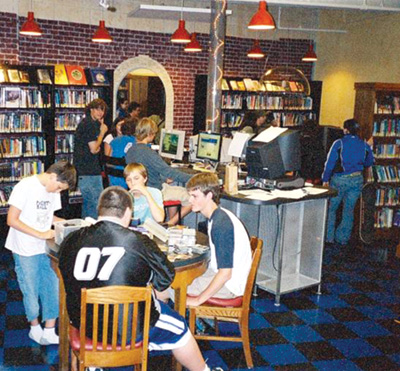YALSA guidelines address media literacy, low-cost options for serving kids
The new “Teen Space Guidelines” created by the Young Adult Library Services Association (YALSA) feature tech front and center, from social gathering places on the Web to gadgets you can grip in your hands.
“It’s 2012 and especially where teens spend more time online and on smartphones, it seems short-sighted to omit [tech] from this document,” says Beth Yoke, YALSA’s executive director.
YALSA crafted the guidelines to help public librarians design environments that address the specific needs of teen patrons. Within the nine different areas mentioned in the document, one-third specifically address how to support teens in their use of technology. Librarians are encouraged to help kids understand how to use digital media through the lens of intellectual freedom and more actively involve them in maintaining the library’s virtual presence.
The document isn’t a blueprint, but an overarching philosophy about teen-space development in both public and school libraries. There are suggestions about how to present downloadable books and electronic databases, and the availability of wireless access is also emphasized. But at the top of the list is soliciting teen input on what these users want in the physical space, programs offered, and materials available to them.

The teen room at Waupaca (WI) Public Library.
Peg Burington, the library director at the Waupaca (WI) Area Public Library (WAPL), got kids involved from the start of WAPL’s $115,000 teen space redesign in 2006. From helping to paint the walls to composing a materials wish list, teens have a stake in WAPL, a model institution cited in YALSA’s guidelines.
New York’s Queens Library is currently revamping its teen space. Two teen rooms, expected to open sometime in 2013, will give patrons the option of choosing a quiet space for group study or another space with a large monitor for video gaming for more active pursuits. In addition, the space will feature a technology area where students can collaborate on projects.
In these tough budgetary times, not all libraries have the resources to outfit a brand- new teen environment. But upgrades don’t necessarily require big bucks to make libraries relevant to young users. All of the major social media platforms, from YouTube to Twitter, for example, are free and kids can connect to them from library computers—or their own phones. That means that libraries can provide an invaluable service in teaching young users how to protect their privacy and interact safely online.
“When you talk about budget constraints, the tech piece is often a no- or low-cost option,” says Yoke. “Setting up a Twitter account is free. That’s staff time and staff expertise, not hardware or physical space.”
Furthermore, libraries can examine their own budgets and usage statistics to see if they’re allocating funds sufficiently to serve the number of teens who use the library. So a teen plan may not require new funding sources, just a tweak of the existing budget, says Yoke.
While it’s unlikely any teen space will hit all nine of YALSA’s guidelines in their entirety, libraries now have some markers to aspire to, whether they’re a 25,000 square-foot facility or a single-room branch.
“In the library world, everyone is still struggling with budget,” says Yoke. “But that’s doesn’t mean we shouldn’t strive for an ideal.”


